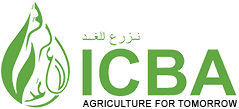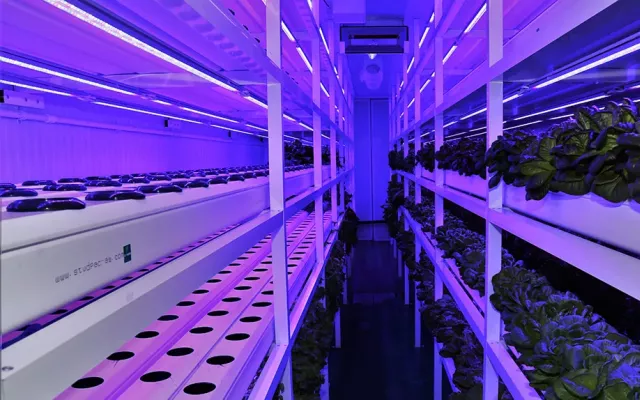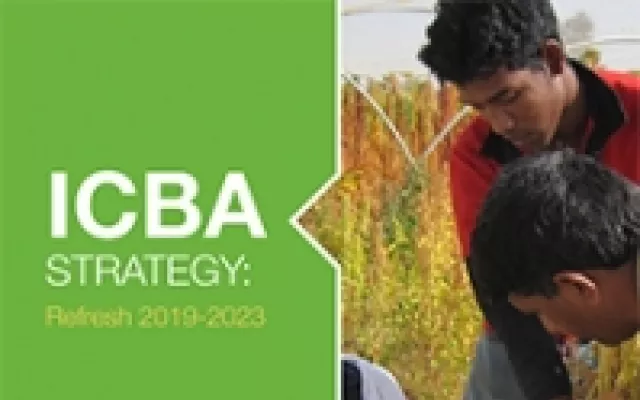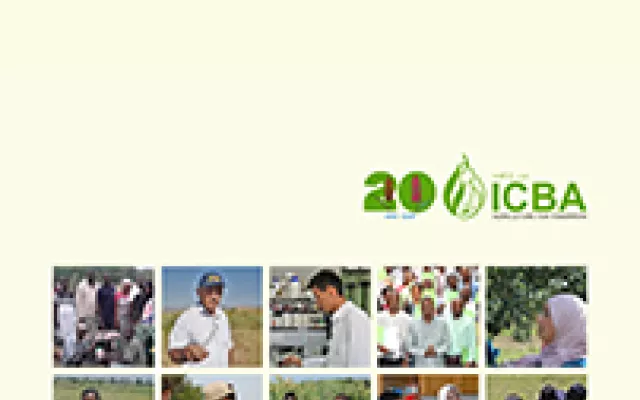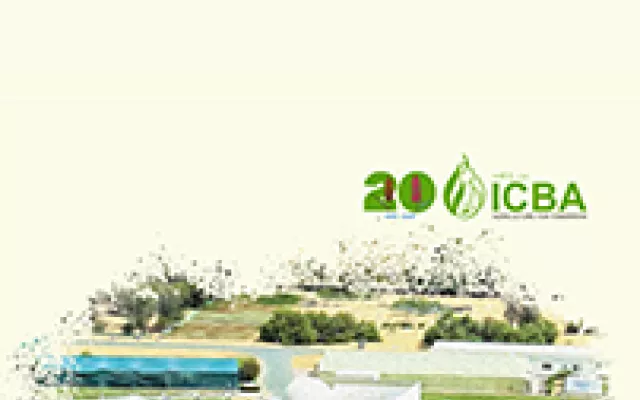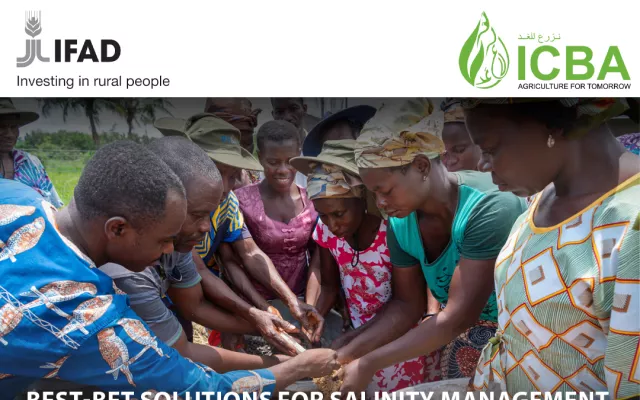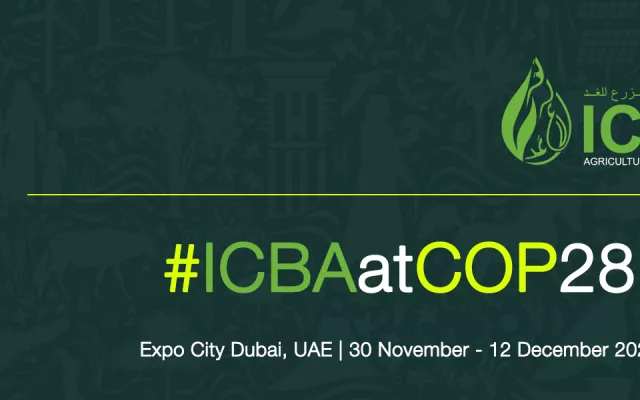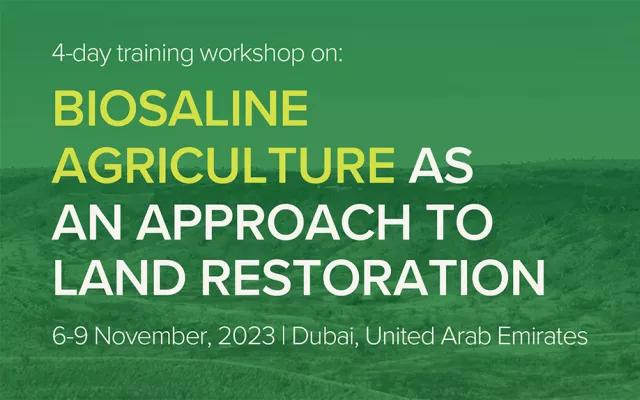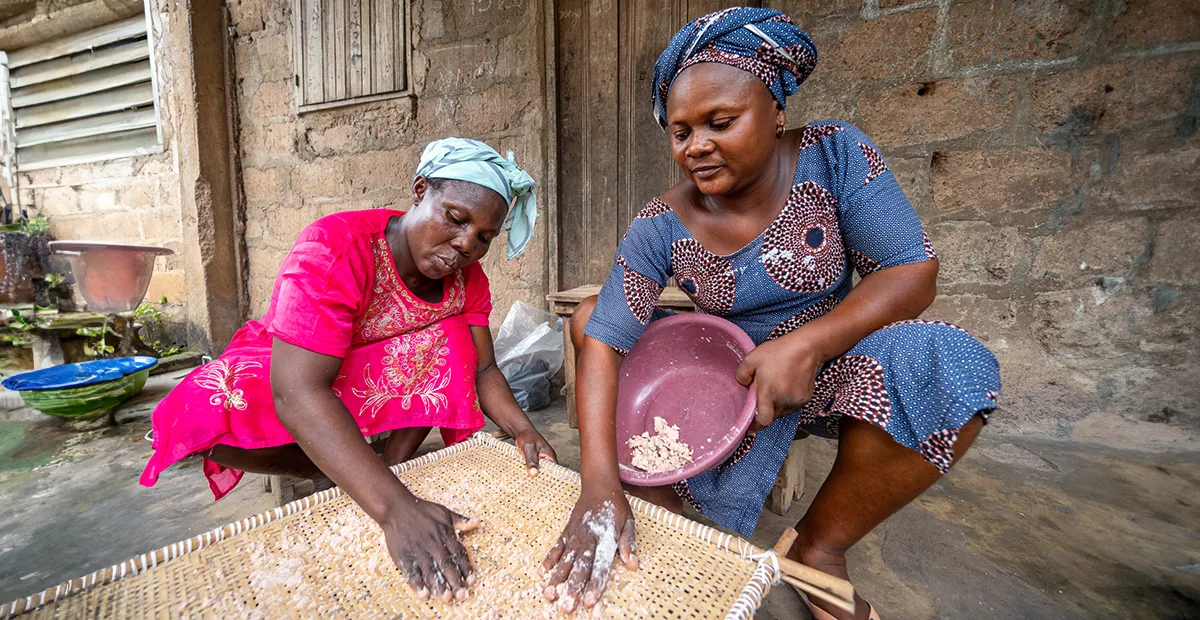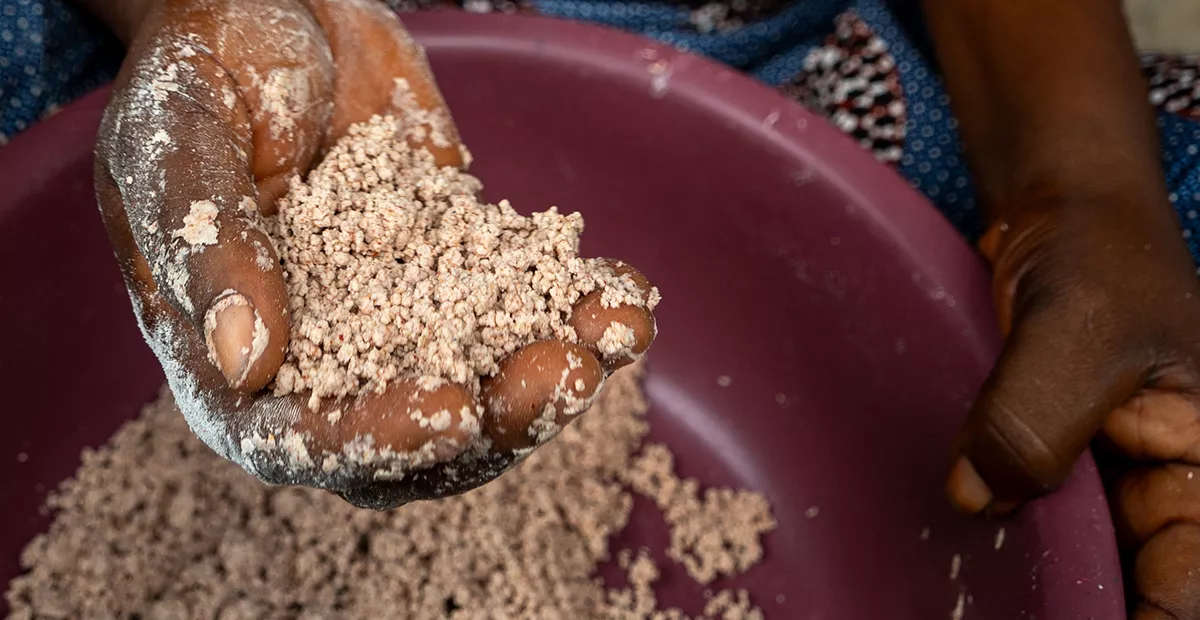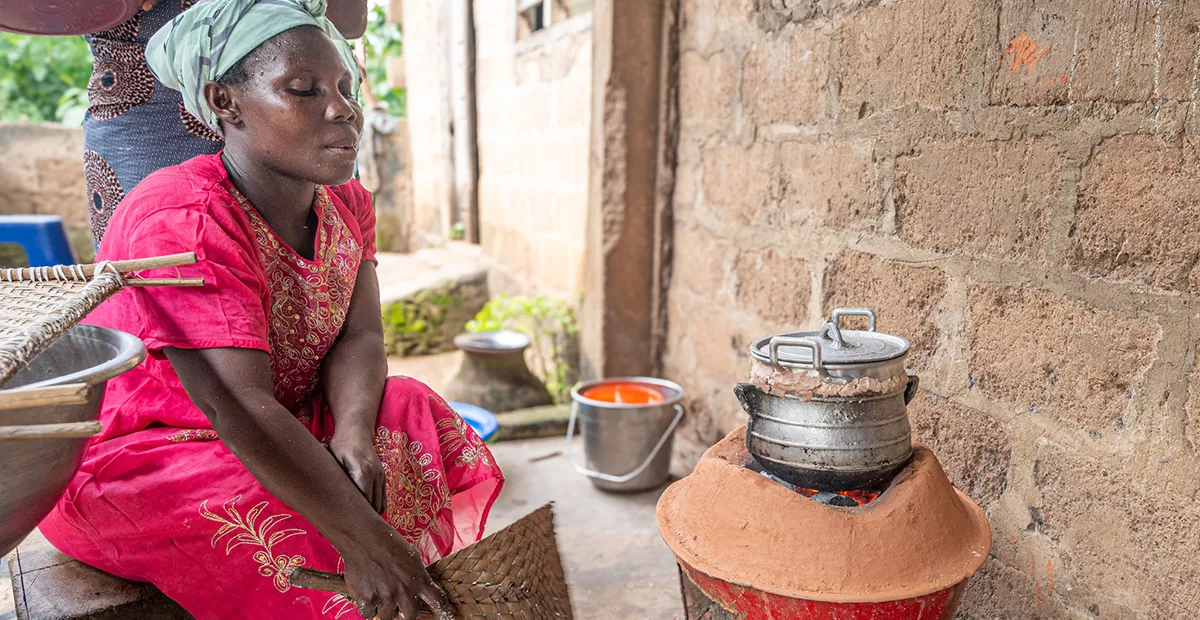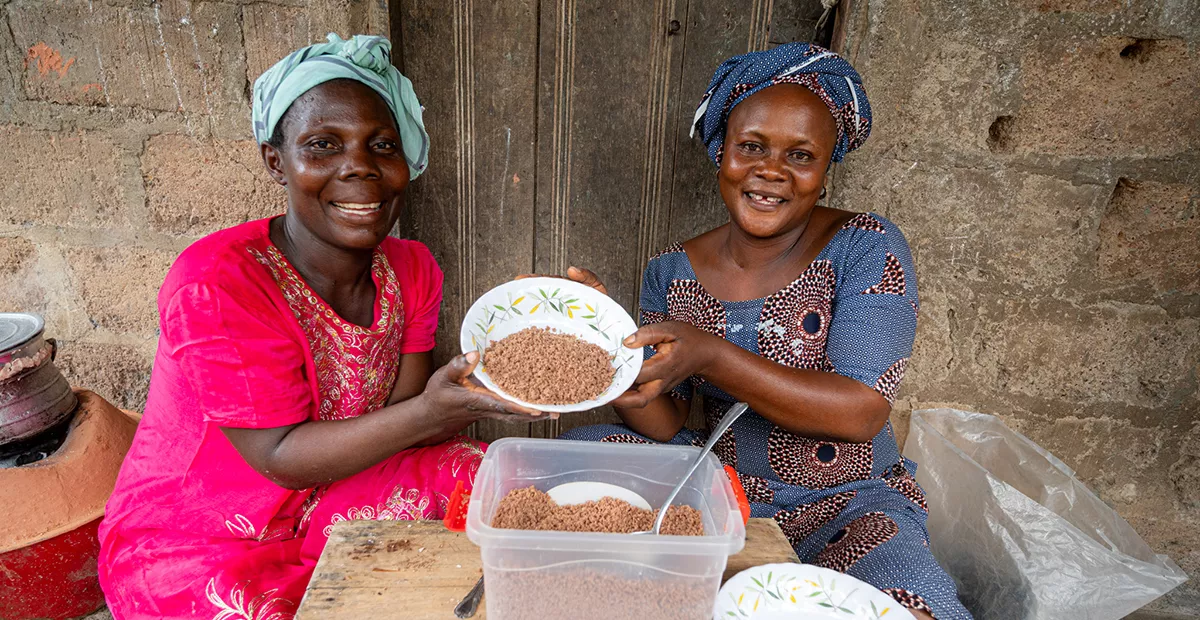Making couscous from sorghum in Togo
1 April 2024
Ms. Emefa Ahatefou, a famer in the village Atti-Apédokoè in Togo, and her family love couscous. For generations, families in the village have eaten couscous made with wheat and it is now an important component of their diet.
But Covid-19, the high cost of food imports and the changing climate are all throwing out some challenges these days. Farmers, like Emefa, are struggling to grow enough crops to meet their needs. But Emefa and other villagers of Atti-Apédokoè have recently learned that they can make couscous out of sorghum, a crop which they can grow in their own fields and which is more resilient to climate change and market fluctuations than other crops.
Atti-Apédokoè lies a bit more than an hour’s drive from the Togolese capital of Lome. The village relies primarily on subsistence agriculture of rice, maize, vegetables and livestock.
“The yields of rice and maize in Atti-Apédokoè have been declining dramatically in the past few years due to climate change and other factors,” said Dr. Chantal Goto, Director of Laboratories of the Institut Togolais de Recherche Agronomique (ITRA). “Our studies have shown increased levels of salinity in the soil and weather data shows longer periods of drought.”
Under a five-year project titled “Improving Agricultural Resilience to Salinity through Development and Promotion of Pro-poor Technologies” (RESADE), the International Center for Biosaline Agriculture (ICBA) is working with national agricultural research systems in Botswana, The Gambia, Liberia, Mozambique, Namibia, Sierra Leone, and Togo to improve agricultural production and productivity and increase incomes of farming communities, particularly of women, in salt-affected agricultural areas. The project is implemented in partnership with the International Fund for Agricultural Development (IFAD) and the Arab Bank for Economic Development in Africa (BADEA).
“RESADE recognizes the challenges that the people of Atti-Apédokoè are facing and is presenting a number of solutions to those challenges,” said Dr. Nhamo Nhamo, a senior agronomist at ICBA and a member of the RESADE team. “We are introducing improved varieties of crops they currently plant, such as rice, as well as new crops which are more resilient to climate change, such as sorghum.”
The people of Atti-Apédokoè do not grow sorghum yet but trials conducted by the RESADE project indicate that it does hold promise in the region. Sorghum is often referred to as the “camel of crops” and is a true physiological marvel. It’s one of the toughest cereals and can survive in hot marginal environments with minimal water.
Sorghum is one of the world’s oldest cereals. It was first domesticated in Northeast Africa, in what is now Ethiopia and Sudan, but is now grown on every continent except Antarctica. It’s a versatile crop and used as both human food and animal feed; it’s fermented to make beer and it’s ground into flour for use in other food products. It’s also grown as a pasture crop and made into silage, and the leaves and stalks produce biofuel.
And sorghum flour can be used to make couscous and Emefa and her fellow farmers were keen to learn how.
The RESADE team in Togo conducted two training sessions to introduce the members of three cooperatives to sorghum and to demonstrate how to make couscous from sorghum. The training aimed to help the farmers add more value to their produce, improve nutrition and create ways to process food which would at times go to waste during years of abundant harvest.
Emefa and her neighbor, Ms. Adjo Akana, liked what they saw during the RESADE training and started making their own couscous from sorghum. “Sorghum is a new crop to us but after making couscous from it, we see that it can be a good alternative to wheat and can help us increase our family income,” said Emefa. “We look forward to receiving seed from the RESADE project and planting sorghum in our fields.”
Emefa and the families of Atti-Apédokoè now love couscous even more knowing they have an alternative crop which can tolerate the challenges of a changing climate.
RESADE videos in Togo
